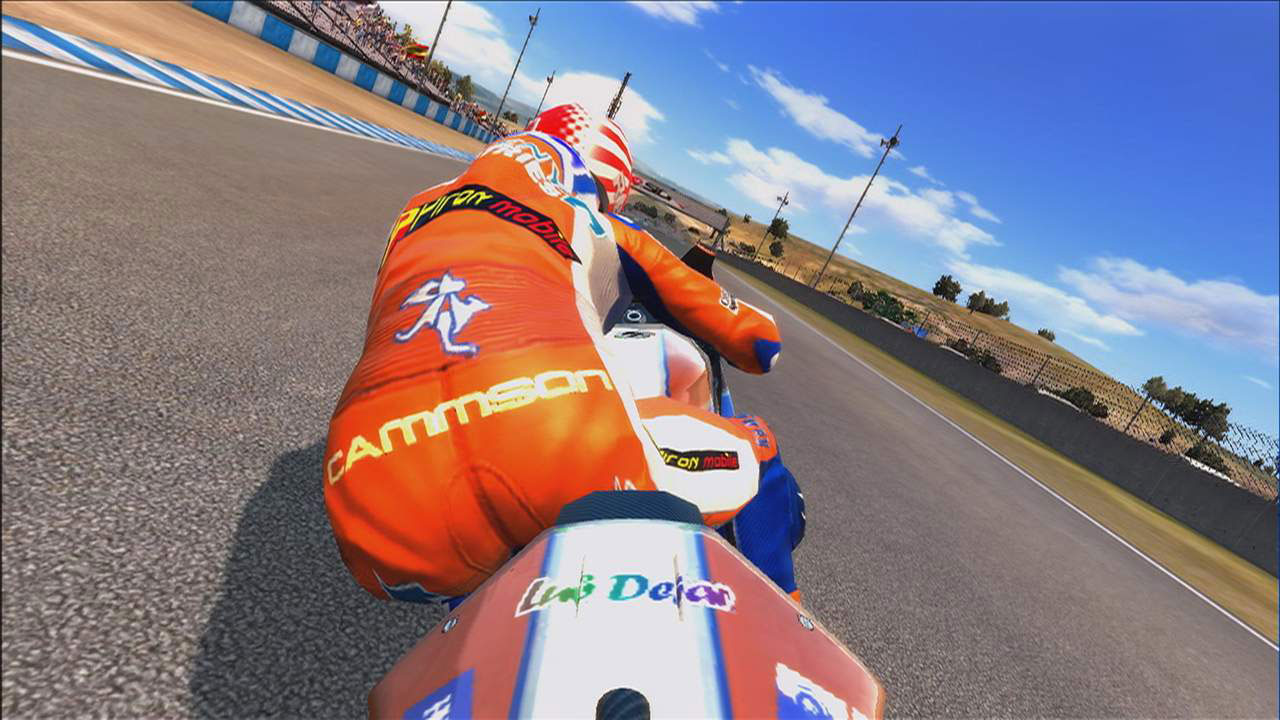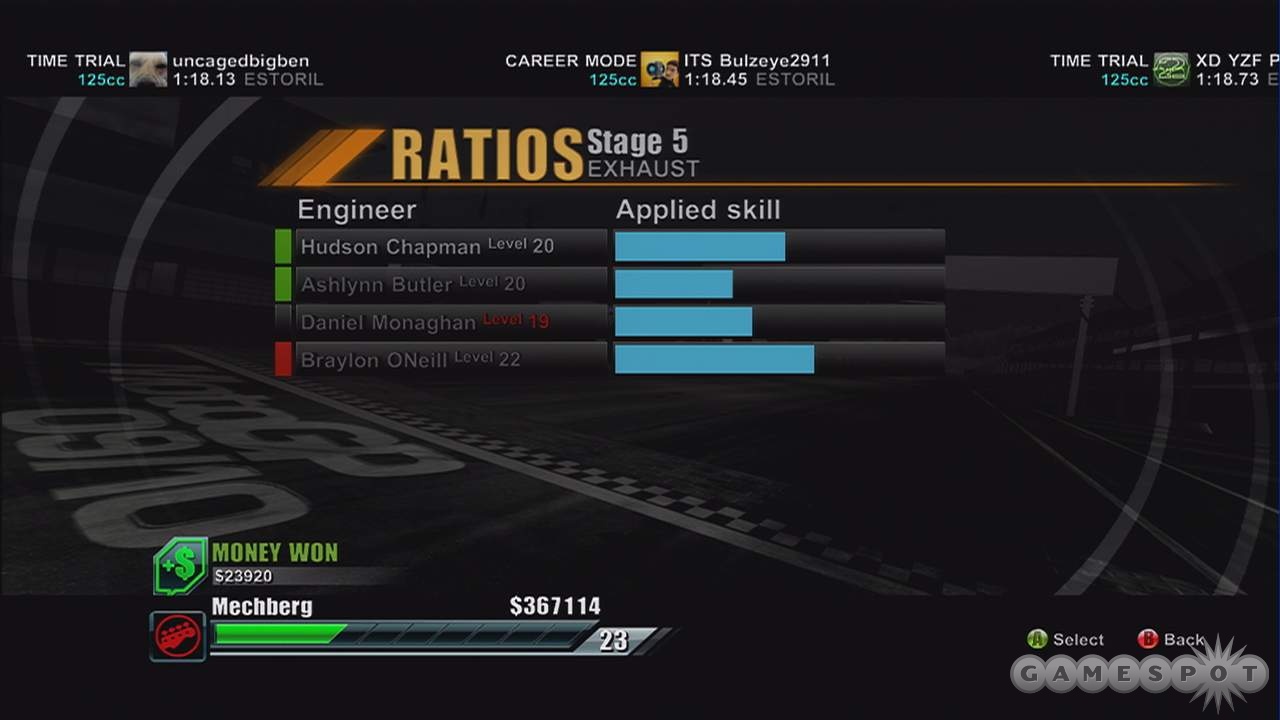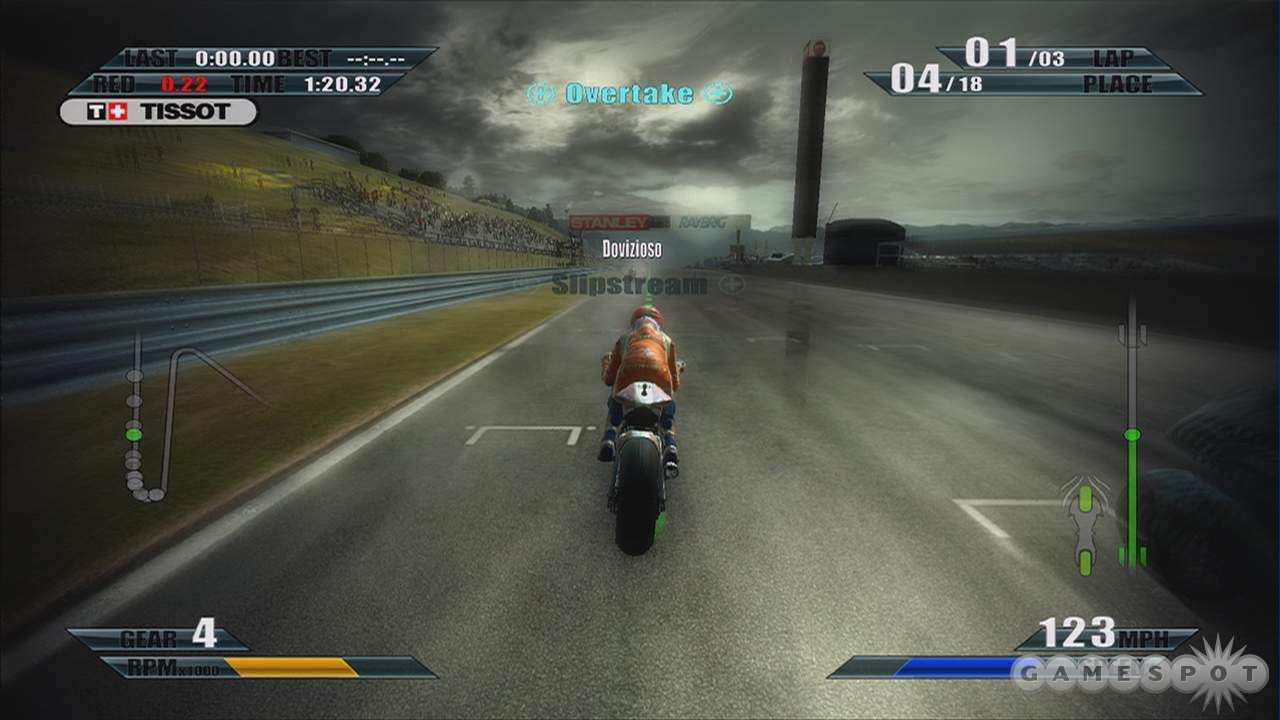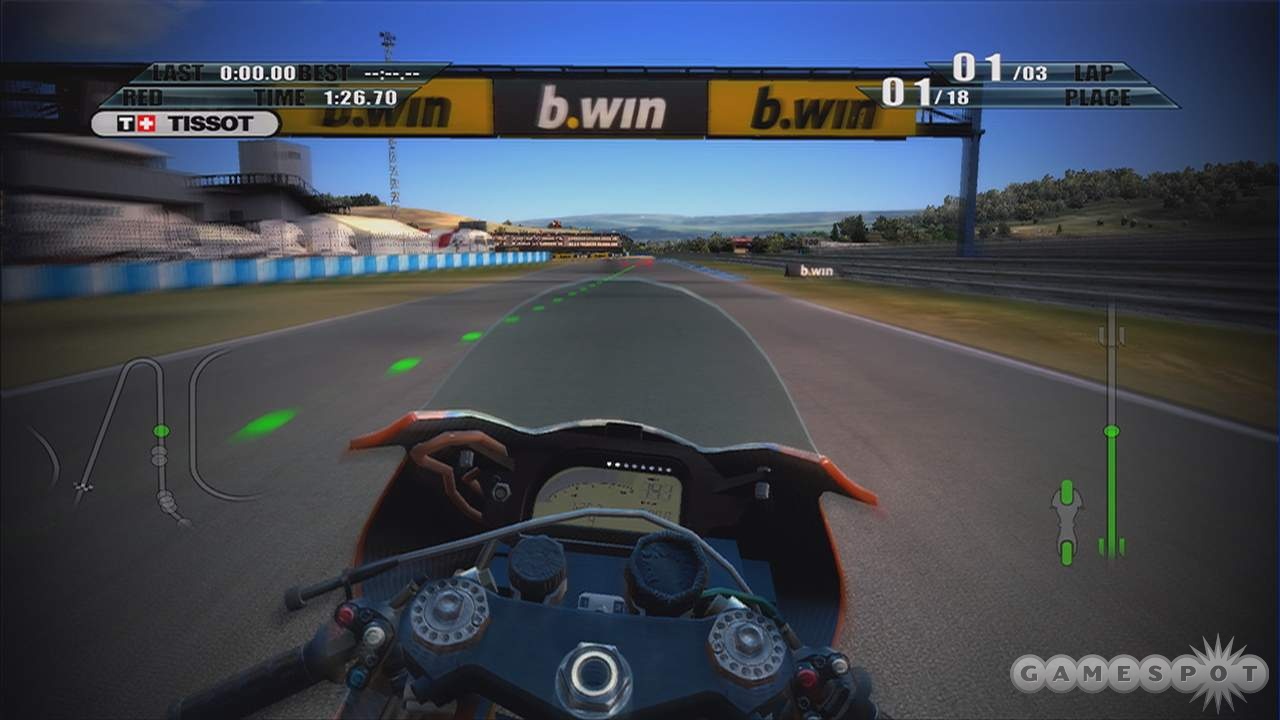Some call it bravery, and some call it insanity--that particular willingness of MotoGP racers to strap themselves in the saddle of a two-wheeled, 800cc monstrosity and rip around some of the world's toughest tracks with nothing more than a helmet and thick leather coming between them and oblivion. For the rest of us who might lack that particular fortitude, there are video games like Capcom's MotoGP 09/10 for the Xbox 360 and PlayStation 3. This is the third MotoGP game from the company, and unlike the straightforward previous efforts, MotoGP 09/10 introduces some new features that add depth to the racing experience. However, those additions are offset to a certain degree by some strange AI quirks and an overall organization that makes it tough to get to the game's best content.

The biggest additions in MotoGP 09/10 are found in the game's Career mode. You are responsible for more than just your performance on the track here; as your career progresses, you need to hire a staff of press officers and engineers who are responsible for securing sponsorship opportunities and researching new technology for your bike, respectively. Money from sponsors is important, because as your team grows, you need more than your race winnings to keep the team afloat. Different sponsors have different requirements you need to meet on-track in order to get paid (such as finishing 8th or above in qualifying or in a race). Failure to do so can mean missing out on quite a big payday; miss too many of these goals and you might even be reduced to laying off staff to make it to the next week.
You can hire engineers to work on various aspects of your bike, such as tires, engine, suspension, and so on. Different engineers have different mechanical specialties, and for quicker results, you need to make sure you have the right person on each job from week to week. Both press officers and engineers have levels attached to them: higher-level press officers will be able to get you better sponsorship opportunities, and you need higher-level engineers as you move up through the different bike classes in Career mode. All of this hiring and firing and sponsorship signing means a lot of heavy menu navigation, but it's all attractively organized and easy to understand.
Progress in Career mode is determined by a number of metrics, including championship points and cash earned from completing races. New for this year is a rider reputation system that measures your performance on the track in more granular terms. You earn reputation for doing things like making clean passes, running incident-free sections of the track, or completing in-race challenges (such as passing a singled-out rider or reaching a certain top speed on a straightaway). Conversely, you lose rep by being passed by other riders, hitting opponents, falling off the bike, or using the game's new second-chance feature (which lets you rewind a race and drop back in at any point). At the end of each race session, you are given an overall reputation grade, and all of the rep points then feed into your overall reputation level. Reputation doesn't mean much in terms of how other riders react to you; instead, improving your rep can earn you more slots to hire additional staff.
On the track, MotoGP 09/10 straddles a line between arcade and simulation racing in a way that can be disconcerting at first. On the default settings, the game's HUD is absolutely jam-packed. In addition to standard lap timers, race position, current gear, track map, and so on, the game throws in a bunch of information, some of which is superfluous. For example, every action you perform on-track that causes you to earn or lose reputation is called out in bright blue (or red) letters, which can be annoying, especially as the messages pile up. In the lower right-hand corner of the screen, you'll find a color-coded sector indicator that will tell you how cleanly you've driven a certain section of the track, as well as a bike mock-up that illustrates the wear of your tires, the latter of which proves to be one of the most important bits of information you'll need in a race.
You'll be referring to that tire meter often, especially in the MotoGP class, where the immense power of the bikes wreaks havoc on the tire rubber. In fact, tire wear is one of the real strengths of MotoGP 09/10's handling model. If you've been driving aggressively during the first part of a race, you'll often find yourself struggling with a rear tire that has lost a good deal of grip toward the end of the race. As a result, success in a race is all about being smooth--using the precise amount of brakes going into a corner and smoothly accelerating out in order to do the least damage possible to your tires.

There are four different skill levels in MotoGP 09/10: gentle, moderate, severe, and insane. Most riders will find their comfort zone on the moderate setting; as you move deeper into your career, you'll eventually have invested so much time and money into researching your bike that you'll find yourself blowing the competition off the track on sheer mechanical muscle alone. Because of this, you can set AI skill level at any event on the calendar to increase the challenge level. Depending on the skill level you choose, your opponent riders in MotoGP 09/10 are often hard-charging and are apt to slip behind you to gain a draft and then zip around you on straights. AI bikes occasionally make mistakes, going too deep into corners or running into one another, and they're more than happy to make you pay in the late goings of a race if you haven't been taking care of those tires.
Those positives aside, there are some troubling aspects of the game's racing. For example, performance between qualifying and actual races can vary wildly. It's not unusual to out-qualify the field by five seconds or more, only to find yourself inexplicably in a wheel-to-wheel battle with opponents once the green flag drops. This disparity between qualifying times and race performance has all the telltale signs of rubber-band AI, but there's no doubt that it makes for exciting, close-knit racing. In addition, the bikes are tremendously stable in the game--to a fault. You can be rammed from behind by a bike going 50mph faster than you, and instead of the result being a horrific accident, you merely enjoy a boost of speed.
Perhaps the biggest annoyance in MotoGP 09/10's handling is the overreliance of the tuck, which is when the rider digs down deep in the saddle to gain an extra bit of aerodynamic advantage from his bike. It's used in real-life races too, but in the game, it's overexaggerated to a ridiculous degree. You initiate the tuck with a button, and the game's reliance on the tuck means you miss out on an extra 20 to 30mph of top speed (or, sometimes, even the ability to go from fifth to sixth gear) if you don't use it. You'll get used to using the tuck to your advantage quickly, but it never feels realistic.
MotoGP 09/10's other modes include Championship, Arcade, Time Trial, and multiplayer. Unfortunately, you can race only on MotoGP-class bikes at the outset in Time Trial and multiplayer races. In order to gain access to the game's best bikes in Championship, Career, or Arcade mode, you first need to complete full seasons on the lower-class 125cc and 250cc bikes. The smaller bikes have their own charms, and they serve as effective learning bikes for those new to motorcycle games, but it's too bad veterans have to spend so much time slogging through the two-wheel minor leagues before getting on the big boys.
In addition to split-screen racing, MotoGP 09/10 features online racing for up to 20 people. In between sessions, players can vote on the next racetrack, the number of laps, weather conditions, and so forth. You might have trouble finding a full 20-person race online, but you can expect good performance once the race begins. In keeping with the game's dual-year title, Capcom is also planning a free update for the game that will update the tracks and riders to coincide with the start of the 2010 MotoGP season.
MotoGP 09/10 doesn't skimp on the racing, even if it takes too long to get to the bikes you really want to ride. The long Career mode gives you more to do than simply button through to the next race on the calendar; the online racing is respectable if not overly crowded; and the game's difficulty runs the gamut from simplistic to ludicrously challenging. Most importantly, on the track, the racing blossoms the more you play thanks to the game's healthy respect for smooth riding, which, as any MotoGP rider will tell you, is a skill that is only developed over time.

